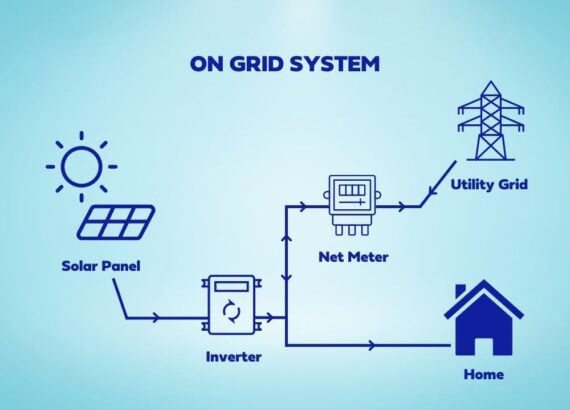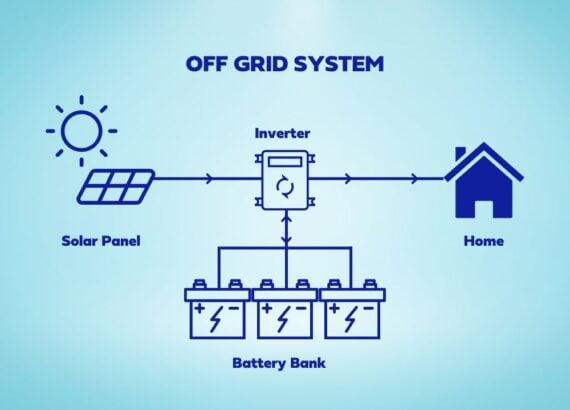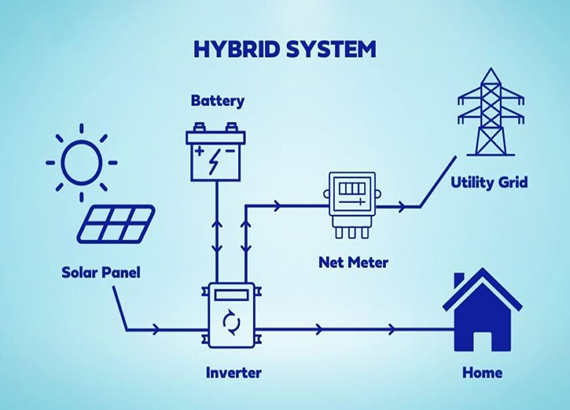Types of Solar Power Systems
We offer numerous types of solar power systems that cater to both residential and commercial sectors
On Grid Solar System
An on-grid solar system generates surplus electricity that can power not only homes but also commercial and industrial spaces.
The primary requirement for this system is the presence of a utility grid. During the day, any excess electricity produced by the solar panels is transferred to the grid.
At night, or during periods of low solar production, electricity is imported back from the grid. The best part? If solar generation is low due to unfavorable conditions, the grid ensures uninterrupted power supply.
This system doesn’t require a battery — the grid acts as your backup!


Off Grid Solar System
An off-grid solar system operates independently and does not require a connection to the main power grid. It uses a battery backup to store solar energy generated during the day.
The system includes solar panels, a charge controller, a battery, mounting structures, and an inverter. Solar panels capture sunlight during the day, while the battery stores excess energy to power appliances at night.
Off-grid systems are self-sustaining and ideal for remote areas without access to the national grid.
Hybrid Solar System
Hybrid solar systems generate electricity using solar panels, hybrid inverters, and batteries. The stored power can be used later, especially during power outages, offering a reliable backup solution.
These systems function similarly to traditional grid-tied systems but with the added advantage of energy storage. This means they can continue supplying electricity even when the grid goes down.
A hybrid solar system combines the best features of both on-grid and off-grid systems—connected to the grid via net metering, while also storing excess energy in batteries for later use.
The biggest benefit? Uninterrupted power supply. The system stores surplus energy generated during peak sunlight hours, ensuring you always have electricity when you need it.
Intrigued? Keep reading to explore components, pricing, and the different types of hybrid systems.

